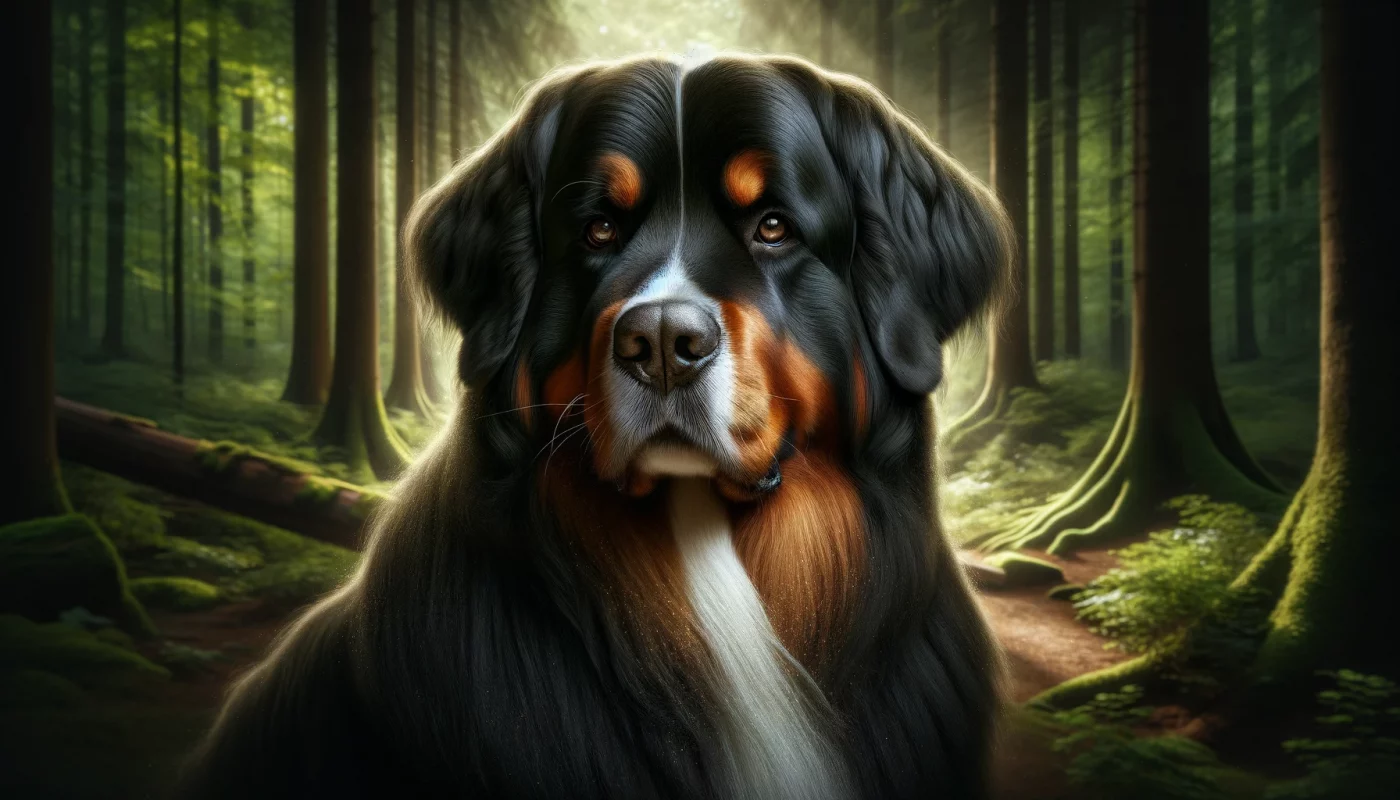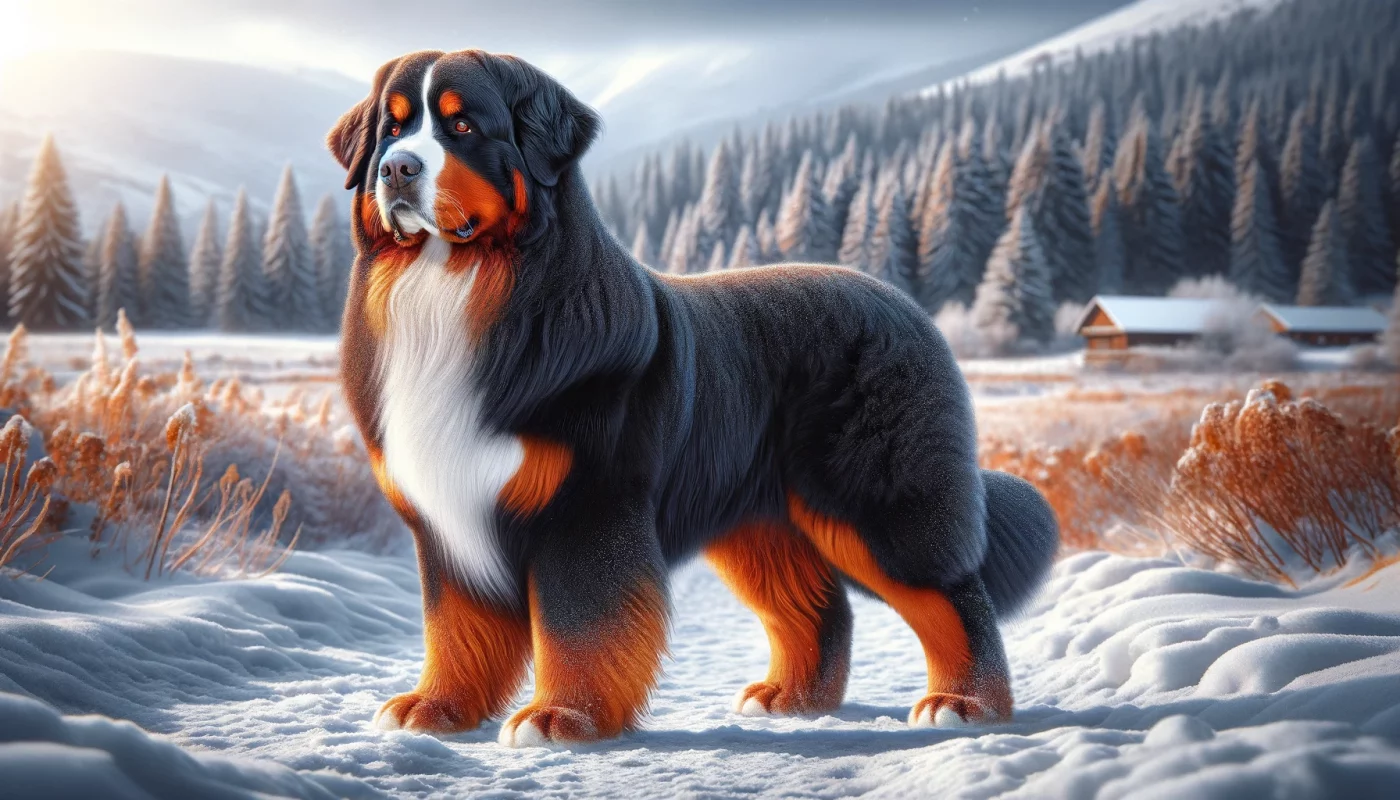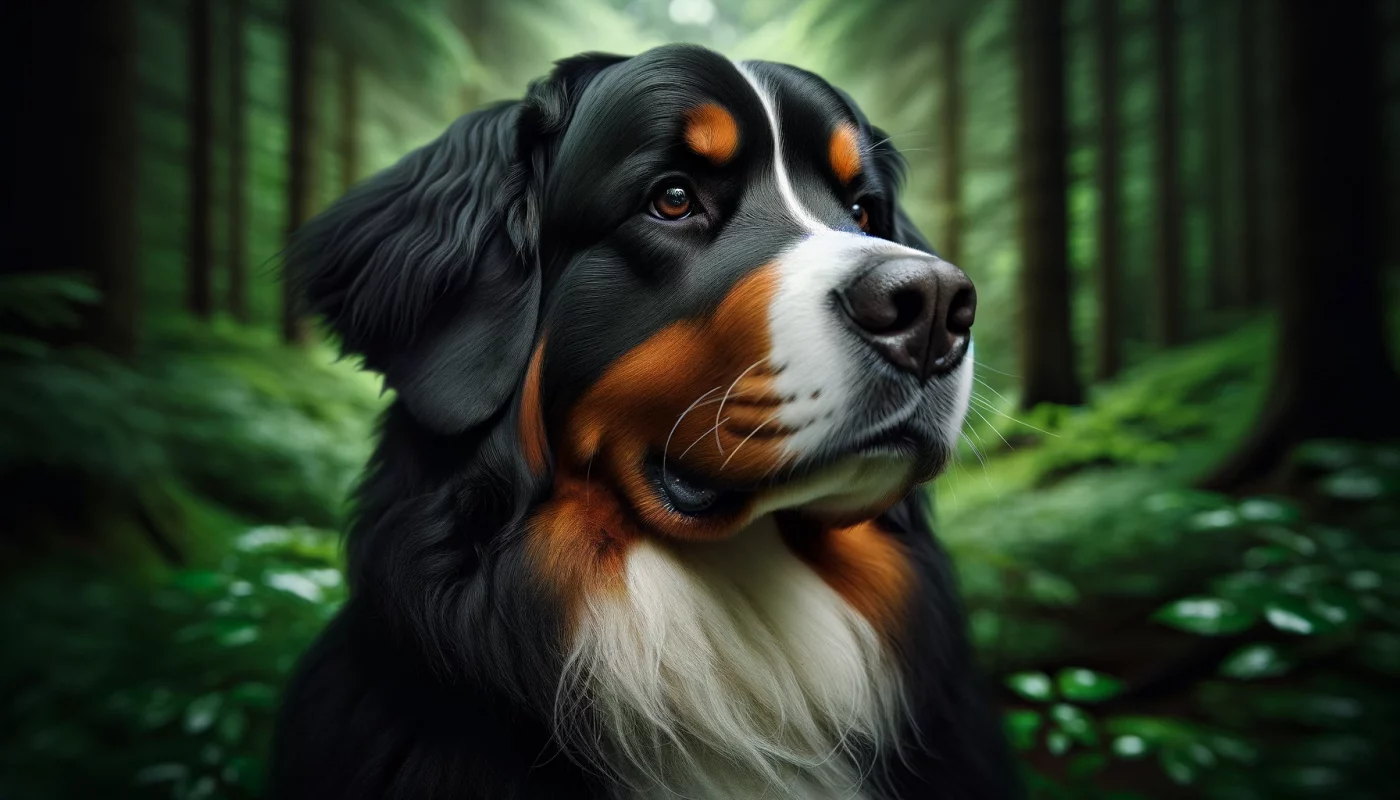Bernese Mountain Dogs, known for their majestic appearance and gentle demeanor, are a breed that captures the hearts of many. Originating from the Swiss Alps, these dogs are not only recognized for their robust working capabilities but also for their stunning coat colors. The traditional tricolor pattern—black, white, and rust—is most common, yet within this framework, variations exist that enhance their appeal and showcase unique characteristics. In this article, we will explore seven remarkable color variations of the Bernese Mountain Dog, each possessing its own distinct charm and aesthetic value. As we delve into these variations, we will discuss how they fit within the breed’s standard and what makes each one special.
1. Classic Tricolor

The Classic Tricolor Bernese Mountain Dog is the epitome of the breed’s color standards. This striking combination includes a black base coat with rich rust markings above the eyes, on the cheeks, and on each side of the chest. White is prominently featured on the chest, toes, tail tip, and a blaze that runs up the face. This coloration is not just visually striking but also historically significant, as it helps to define the classic look that has been associated with the breed for centuries. The contrast between the colors highlights the dog’s powerful physique and aligns with the breed’s origins as a farm dog in the Swiss mountains.
2. Rusty Black

A less common but equally stunning variation is the Rusty Black Bernese Mountain Dog. These dogs have a predominantly black coat that may show a faint rusty cast, especially under sunlight. Unlike the clearer distinctions in the classic tricolor, the rust in these dogs blends more seamlessly with the black, giving them a smoky appearance. This variation is particularly eye-catching due to its subtlety and rarity. Owners of Rusty Blacks often report that their dogs’ coats shimmer beautifully in natural light, adding to the breed’s majestic aura.
3. White Marked

The White Marked variation involves an unusual amount of white in the coat. These Bernese Mountain Dogs might have extensive white covering more than just the chest and toes; it can extend over the neck, belly, and legs, sometimes even encroaching into the traditional rust areas. While not as common, this variation is highly prized for its distinctiveness. The additional white can make the dog’s other colors appear more vibrant by contrast, and it brings an added level of uniqueness to each animal’s appearance.
4. Minimal White

Conversely, the Minimal White variation features less white than what is typically seen in the tricolor pattern. These dogs may have only small white patches on the chest, toes, and tail tip, with no blaze on the face. This variation emphasizes the black and rust more, making these dogs appear darker overall. The Minimal White is appreciated for its sleek, streamlined aesthetic, which highlights the muscularity and strength of the Bernese Mountain Dog without the usual bright interruptions.
5. Open-Faced

The Open-Faced Bernese Mountain Dog lacks the typical white blaze on the face, which allows the black and rust to dominate the expression. This can give the dog a more uniform look, with the rust markings around the eyes and cheeks becoming more pronounced. This variation is especially captivating because it emphasizes the soulful eyes and expressive face of the Bernese, making them appear even more endearing and approachable.
6. Extra Rust

In the Extra Rust variation, the rust markings are more extensive than usual, covering larger areas than the standard specifies. This can include a broader presence on the legs, cheeks, and above the eyes. The enriched rust not only brightens the overall appearance but also accentuates the dog’s features, enhancing expressions and the visibility of their movements. This variant is especially picturesque during the colder months, as the rust provides a warm contrast to snowy backgrounds.
7. Dark Muzzle

Finally, the Dark Muzzle variation features a distinctly darker coloration around the nose and mouth, extending sometimes to under the chin. This characteristic can make the dog’s face look more pronounced and adds a dramatic touch to the typical facial markings. The Dark Muzzle is less about the overall color distribution and more about highlighting the breed’s strong jawline and thoughtful expression.
In conclusion, the Bernese Mountain Dog is a breed that not only offers versatility in its capabilities but also in its appearance. From the classic tricolor to more unique patterns like the Extra Rust or Minimal White, these variations provide potential owners with a wonderful spectrum of choices. Each variation not only adds to the visual appeal of the breed but also celebrates its rich heritage and adaptability. Whether working on a farm, competing in shows, or providing companionship, the Bernese Mountain Dog in any of these colors is a sight to behold, embodying beauty and strength in every shade.
Frequently Asked Questions About Bernese Mountain Dogs Colors
1. What are the standard color patterns for Bernese Mountain Dogs?
The standard color pattern for Bernese Mountain Dogs is tricolor, consisting of black, rust, and white. The base of the coat is predominantly black, covering the body and most of the head. Rust markings appear above the eyes, on the cheeks, the sides of the chest, and on each leg. White is present on the chest, feet, tip of the tail, and as a blaze running from the muzzle up the forehead. This pattern is both striking and consistent, with little variation in the placement of the colors.
2. Can Bernese Mountain Dogs have any other colors besides the standard tricolor?
Bernese Mountain Dogs are primarily known for their traditional tricolor coat, but within this standard, some variations exist such as those with more or less white, or with a smoky hue to the black areas. However, any significant deviation from the three recognized colors (black, rust, and white) is not standard and could indicate a mix or a deviation from the breed standard often not recognized in formal breed competitions.
3. Do Bernese Mountain Dogs’ colors change as they age?
Yes, the colors of a Bernese Mountain Dog can change as they mature. Puppies might be born with brighter or more muted markings that deepen, lighten, or sharpen in clarity as they grow older. The most notable changes are often in the rust areas, which can intensify or expand slightly. However, the basic distribution of black, rust, and white generally remains consistent throughout their life.
4. What is the rarest color variation in Bernese Mountain Dogs?
The rarest color variation in Bernese Mountain Dogs is an increased amount of white known as the “white marked” or “excessive white” pattern. This variant features more white than usual, extending over the neck, belly, or even the face, beyond the standard markings. Such variations are unusual and not typically desired in show circles where breed standards are strictly upheld.
5. Does the color of a Bernese Mountain Dog affect its health?
No scientific evidence suggests that the color of a Bernese Mountain Dog has any direct impact on its health. However, dogs with lighter colors, particularly those with excessive white, might be more susceptible to skin cancer if they are frequently exposed to the sun without protection. Additionally, genetic conditions that sometimes correlate with color (though rarely in Bernese Mountain Dogs) should be monitored through responsible breeding practices.
6. How does the tricolor coat of Bernese Mountain Dogs develop in puppies?
Bernese Mountain Dog puppies are born with their tricolor pattern already visible, although the colors may develop and become more distinct as they mature. The black is usually prominent from birth, but the rust and white markings can evolve, becoming more defined within the first few months of life. Breeders can generally predict the intensity and clarity of the markings from the colors and patterns of the puppy’s parents.
7. Are there any coat color linked genetic disorders in Bernese Mountain Dogs?
There are no specific genetic disorders linked exclusively to the coat colors of Bernese Mountain Dogs. However, like all breeds, they can be prone to certain hereditary conditions. It is important for breeders to conduct genetic testing to ensure the healthiest possible outcomes and to avoid breeding dogs that carry predispositions to such disorders.
8. What grooming considerations are there for different colored Bernese Mountain Dogs?
Grooming requirements for Bernese Mountain Dogs are consistent across all color variations. Their long, thick double coat requires regular brushing to reduce shedding and prevent matting, particularly during the shedding seasons in spring and fall. Bathing should be done as needed, and more attention may be required for lighter-colored coats to keep them clean.
9. Can Bernese Mountain Dogs have blue or green eyes related to their coat color?
Bernese Mountain Dogs typically have dark brown eyes, and any other colors, like blue or green, are extremely rare and not associated with the standard breed characteristics. Eye color is not directly linked to coat color in this breed. Blue or green eyes in a Bernese could suggest mixed ancestry.
10. Is it possible to predict the exact coat pattern a Bernese Mountain Dog puppy will have?
While the basic tricolor pattern is predictable if both parents are standard Bernese Mountain Dogs, the exact placement and intensity of rust and white markings can vary between individuals. Breeders can make educated guesses based on the appearances of the parents and previous litters, but each puppy may still present slight variations in how their coat colors are distributed.
 Toledo, United States.
Toledo, United States.